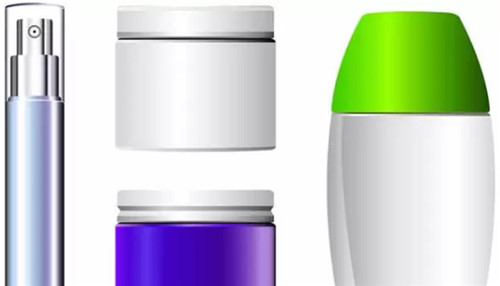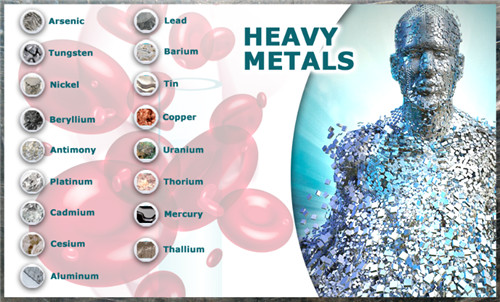Harmful Substances in cosmetic package
2016-11-01 09:34:00

Currently more and more people pay attention to cosmetics packaging and safety when people buy cosmetics, despite of efficacy, brand, price. so pretty innovative cosmetics packaging is becoming more and more attractive to consumers. While the safety of cosmetics has attracted more and more attention of the users and government departments. Various laws and regulations being released. Hazardous substances in cosmetics packaging is increasingly becoming the subject of our discussion.

1, Heavy metal
Heavy metals are talking about density greater than metal 4.5 g / cm3, and environmental pollution said heavy metal mainly refers to the lead (Pb), cadmium (Cd), mercury (mercury, Hg), and chromium (Cr) and other biological toxicity significant heavy elements. Heavy metals can not be biodegradable, but instead continued to enlarge in the biological food chain, enriched with thousands of times, and finally into the human body.
Heavy metals can occur in the human body enzymes and proteins and a strong interaction, and finally to inactivate enzymes and proteins may also accumulate in certain organs in the body, resulting in chronic poisoning.
1.1, regulations and limits
Directive 94/62 / EC: packaging and packaging waste regulations limits the packaging Lead (Pb), cadmium (Cd), mercury (Hg), hexavalent chromium (Cr6 +) four heavy metals does not exceed the sum of 100mg / kg, which is 100PPM.
1.2, heavy metal toxicity
– Lead (Pb): easily lead to neurotoxicity, people’s mental and physical developmental delay, especially children easily poisoned;
– Cadmium (Cd): renal and liver damage, especially to the kidney damage can not be restored; while cadmium can replace calcium makes the bone becomes soft and prone to fracture;
– Mercury (Hg): Mercury can cause a variety of cognitive, personality, sensory and motor deficits;
– Inorganic mercury compounds: mainly affects the gastrointestinal tract and kidneys, can cause severe kidney damage;
– Organic mercury compounds: toxic than the more toxic elements, easily lead to brain and liver damage;
– Hexavalent chromium (Cr6 +): mainly from toxic hexavalent chromium, are carcinogenic; soluble chromium metal and trivalent chromium compounds are harmless to health, only trivalent chromium is converted into hexavalent chromium is toxic for talent .
1.3, Risk assessment
What kind of cosmetic packaging may has heavy metals in it? Glass articles, particularly leaded glass or quartz glass products, printing inks, electroplating spray products, dyes and plastics master batch for bright colors, rubber products, paint on the back of lens etc.
2. Plasticizer
Plasticizer is a additive for increasing materials’ softness. It can be applied on plastics, concrete, cement and plaster, etc. There are hundreds of species Plasticizer. But the most commonly used Plasticizers are phthalates (PHA). Usually the material of plastic wrap are phthalates combined with PE (polyethylene) or PVC (polyvinyl chloride).

2.1, regulations and limits
– Directive 76/768 / EEC Cosmetic and Hygienic Standard for Cosmetics (2007) requires cosmetics contents can not have detectable defined plasticizer;
– EU REACH regulation 1907/2006 defines: DEHP + DBP + BBP <0.1% (1000PPM); DINP + DIDP + DNOP <0.1% (1000PPM); some friends may not familiar with REACH. In fact, REACH regulation is the specific regulations for the EU chemical legislation registration, evaluation, Authorization and restriction.
Its focus on the following aspects:
1) high-volume chemicals (High volumes chemicals): annual consumption is more than 1 ton must be registered;
2) SVHC (SVHC: Substances of Very High Concern): mainly carcinogens; persistent, bio-accumulative and toxic substances; and similar substances, such as: endocrine disrupting substance;
3) responsible for industry: production enterprises annual consumption ≥ 1 t / substances need to be registered; licensed high concern substances; restriction for substances of which risk can not accepted.
2.2, Hazards of plasticizers:
– The role of plasticizer (DEHP) is similar to artificial hormones, it will harm the male reproductive capacity and enable women to precocious puberty, long-term high intake can cause liver cancer. Because young children are in the development of the endocrine system, reproductive system, the potential harms to children caused by DEHP are even greater;
– Plasticizer is harmful to liver, lung, kidney and reproductive organs.
2.3, Risk assessment
Cosmetics packaging may contain plasticizer: rubber products, softened PVC products, softened PE film; in some products, plasticizer is added as an
additive during production; some products contains high amount of plasticizer are caused by the pollution during production.

——Original Articles from Auber Packaging,please indicate when reprinting the articles.To learn more cosmetics packaging,pls visit our website:
—————————————————————–





